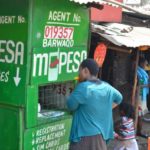I have been thinking about this topic for a bit now but never really had a lot of time to put down some thoughts on a piece of virtual paper. That was the case until today when I got a call from UNCDF/Better than Cash Alliance Secretariat asking for talking points for the Administrator on a session dedicated to this theme that will take place next week during the GA. The agenda for the meeting is here and includes Bill Gates as one of the speakers.
And below is what I sent back to them.
Overview
The rapid diffusion of new ICTs, in particular mobile technologies, have opened new opportunities to bring financial services to millions of people sitting at the bottom of the socio-economic pyramid. Recent estimates indicate that there are over 6.2 billion mobile subscribers around the globe, 85% living in developing countries.
In fact, there are many more mobile subscribers and mobile phone user that people who actually have access to financial services of any sort -some reports indicate that 2.5 billion of the world’s population do not have access to such services. Simplifying things a bit, we can say that potentially 1.3 billion people could actually use a mobile device to gain access to some financial services. Furthermore, recent studies suggest that there close correlation between access to financial services and poverty alleviation, provided other policies and programmes are in place.
From a development point of view, the “democratization” of the access to new ICTs provide fertile ground to innovate in this area, as it is already happening, and tackle key economic and social issues that have remain unsolved form many decades now. Combining this with existing poverty reduction schemes such a conditional cash transfers and inclusive growth programmes -as well and other public and private efforts to provide access to banking services for example, provide a new wave of development solutions that are not only scaleable to millions but also sustainable in the long run.
From a governance perspective, using new ICTs to support financial inclusion and financial payments in government can enhance transparency of public institutions by establishing clear workflows for the management of public resources and providing digital fingerprints for all financial transactions that can be easily traced and monitored. Needless to say, there are also risks here including the governance of the ICT systems that are in place (who is in charge? Who has access? Etc.), the software applications being used in the backend (malicous software can divert resources to others without leaving a trace) and the communications between parties realizing financial transactions of any sort, among others.
From an e-governance perspective, ICTs can indeed enhance the effectiveness and efficiency of public institutions who then can respond to citizens’ demands in agile and rapid fashion. Being that as it may, let is not forget that using mobile technologies on the demand side (the end users and beneficiaries) must be match by ICT investments in the supply side (public sector) which in the end will host the systems created to promote the financial systems that governments need to create.
UNDP Examples
Haiti
UNDP’s CARMEN project (French acronym for Community Support Centers for House Self-repair, http://minustah.org/pdfs/undp/UNDP_Brochure_Haiti_Rebuilds.pdf) which aimed at help rebuilding houses destroyed during the earthquake that hit the island a couple of years ago, capitalized in the fact that over 50% of Haitians had access to a mobile device (and only 10% access to financial services) to offer access to financial assets that beneficiaries were getting to but the material to rebuild their homes. Initially close to 20,000 people joined the project and were eligible to receive subsidies of up to 5,000 USD – half of them being women. Over 120,000 building were partially destroyed during the earthquake. By the end of 2012 the project had trained over 5,000 people in reconstruction techniques and helped repaired over 3,000 dwellings. The project has secured an additional 5 million USD for the next two years and will continue to use mobiles and increase coverage.
India
The National Rural Employment Guarantee Scheme (NRGES, http://nrega.nic.in) created by the government of India in 2005 guarantees 100 days of employment per year for all rural workers (bear in mind that 70% of the population of India lives in the country side). As most of the beneficiaries of the programme did not have access to banking services, governments from different Indian states decided to use mobile devices to facilitate monthly payments of rural workers salaries. Partnering with local banks and local mobile providers, government provided incentives to them form creating bank accounts to rural workers and use basic mobiles to allow them to access the funds remotely. As mobile phone penetration rapidly expanded in the country, the scheme grew even faster. Today it is estimated that over 10 million people are benefiting from the use of new technologies to have access to basic financial services. For additional information on UNDP’s contribution see this report.
Raúl Zambrano
BDP/DGG





